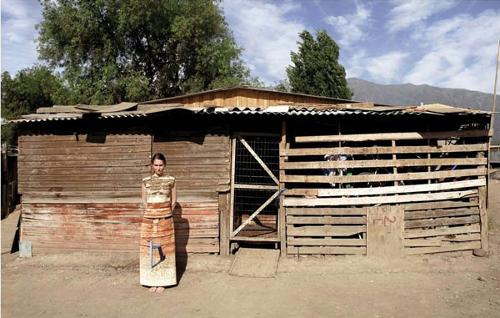This multidisciplinary symposium was conceived and curated by Ian North, with the Contemporary Art Centre of South Australia as its main sponsoring institution. The papers of the ten principal contributors were supplemented by other participants who introduced and responded to those papers in panel discussions. On the first day Ian North's paper offered an explanation of the symposium's rationale and an introduction to the papers given by Brian Boyd, Jennifer McMahon, Donald Brook, and Ian McLean. At the end of the day Rod Taylor acted as a respondent, setting the tone for the panel's responses to questions from the audience about the day's proceedings. On the second day Denis Dutton, Linda Williams, Rex Butler, Jill Bennett, and Peter James Smith presented papers with Stephen Loo as respondent. On both days the discussion was chaired by Professor Chris Mortensen who guided the audience of more than a hundred in directing questions and remarks to the presenters.
The papers were so varied as to have strained any sense of coherent purpose – it was as if the contributors were intent on defying Ian North's stated intention of 'bringing together' participants who usually are 'working at a tangent to each other.' It will be a difficult task for an editor to make good sense of this diversity when the proceedings of 'Visual Animals' are published. While the theme of the symposium was most directly exemplified in the papers presented by Brian Boyd, Jenny McMahon and Denis Dutton, Donald Brook's paper 'For Art: Against Aesthetics' provided a direct challenge to that theme.
The 'new aesthetics' in the symposium title refers to attempts at applying evolutionary theories of the human mind and social behaviour to the understanding of the arts. In the evolutionary biologist's reductive analysis, literature and story-telling have been allowed some limited adaptive function, while visual art is all too dismissively accounted for as a mere by-product. Even if it draws on faculties that once played a part in our evolution, there is no reason to see the activities of visual artists – especially in the artworld since the rise of modernism – as anything more than purposeless exuberance. In this deprecating line of thought the work of the evolutionary theorist Steven Pinker has been most influential, and his review of the anthology 'The Literary Animal', in the April 2007 issue 'Philosophy and Literature', is the acknowledged provocation behind Brian Boyd's paper. Although Pinker has been prepared to accept that the arts most closely associated with language are bound up with our social needs, and that imaginative engagement with fiction may fit us better for real life, he has a decidedly negative assessment of the visual arts. Just as cheesecake gives us megadoses of the sugar and fat that were scarce commodities for our ancestors, and pornography gives us sexual gratification without reproductive consequences, the visual arts, in Pinker's view, are an equivalent kind of perversion.
Denis Dutton's paper 'Landscape and Longing' was also addressed to Pinker's deprecation of the visual arts. As an illustrative backdrop to his argument he showed the painting that Komar and Melamid generated by combining all the features that their survey respondents said they most wanted to see in a painting. The landscape 'America's Most Wanted', though admittedly bizarre and kitschy, might be seen as more than a mere joke, Dutton suggested, because of the way it illustrates the influential thesis developed by Jay Appleton in his 1975 'The Experience of Landscape'. Appleton has argued that our positive response to certain kinds of landscape derives from an innate biological response to the kind of habitat that afforded our Palaeolithic ancestors refuge and protection. Dutton made the possibility of such ancient influence plausible by telling how he has eliminated the problem of pigeons fouling the ledge outside his office window at the University of Canterbury. A rubber snake placed on the ledge is enough to cause pigeons to take flight, and not return. The remarkable thing is not that the pigeons are fooled by a snake that is merely rubber. In New Zealand there are no snakes, so the pigeons' flight is not something they have learned. It is due to an inheritance from their extremely remote ancestors who acquired snake avoiding behaviour by natural selection, and it is now 'hard wired'. In a parallel way, we humans may have retained behavioural predilections that derive from evolutionary pressures on our very ancient Palaeolithic ancestors. And while we cannot know anything about the subjective negative feeling a pigeon has at the sight of snaky-shaped things, we do know what kind of positive feeling arise in us at the sight of the kind of landscape that gave refuge to our Palaeolithic ancestors – we see those landscapes as 'beautiful'. That feeling is the experiential dimension of an innate predilection for safe habitat that is 'hard wired' in us – so the story goes.
Jenny McMahon gave a schematic argument connecting Kantian 'purposiveness without purpose' to those cognitive functions that escape logic, rationality, and language. She drew attention to functions that relate to the ineffable – to our notions of freedom, infinity, and immortality. The dichotomy central to her argument is not that between arts embodied in language and visual arts, but rather that more elusive distinction between form and content that is drawn in all the arts. Hence the functions at issue here are not necessarily more closely connected to visual awareness, yet on McMahon's account they may relate to motivations that are vital, and which thereby might be thought to serve an adaptive function. McMahon's paper offered more detail and more argument than any audience could absorb, but there were plenty of ideas to spark questions from the audience.
While aesthetic qualities may have been variously conceived and defended as fundamental to the arts in the papers on offer, it was just this common ground that Donald Brook was intent on calling into question. For a long time now Brook has been arguing the need to distinguish 'real art' from 'art conventionally so-called'. In the context of this symposium he offered a relevant application of this distinction. Real art is the discovery of previously unknown ways of 'acting with deliberation', and the 'inscrutable world' is the ultimate source of all these 'undisclosed contingencies'. However, since even the most objective attributions of beauty entail a favourable judgement, we had better not limit our concerns only to ways in which the world meets with our approval. Just as we can freely pursue our interests after disinterested scientific inquiry has delivered knowledge to us, so too might we actively pursue our best interests once art has disclosed some previously unknown way of 'acting with deliberation.' Art understood in this way as 'revelation' ranges with indifference beyond both our subjective predilections and our institutionalised practices.
In one notable respect the symposium failed to fulfil its professed interdisciplinary nature. Although it was conceived as a response to recent developments in neuroscience and evolutionary theory that are the source of 'bio-aesthetics' and possible 'new ways of writing world art history,' not even one scientist was recruited as a participant in the symposium.












